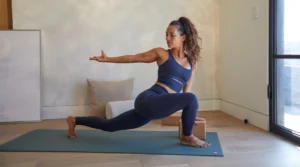What Is Breath Work?
Breath work refers to a variety of intentional breathing techniques designed to improve physical, mental, and emotional well-being. From calming the nervous system to boosting energy, these practices use the power of breath to influence how you feel. Think of it as a free, built-in tool for managing stress, enhancing focus, or even connecting with your inner self.
Why Breath Work Matters for Beginners
Breath work is a game-changer because it’s accessible to everyone, no equipment needed. Whether you’re stressed at work or seeking mindfulness, controlling your breath can shift your state of mind. It’s like having a reset button you can press anytime, anywhere.
The Science Behind Breath Work
Breath work affects the autonomic nervous system, which regulates stress responses. Slow, deep breathing activates the parasympathetic system, promoting relaxation, while faster techniques can energize you by stimulating the sympathetic system. Studies show breath work can lower cortisol levels, improve focus, and even reduce symptoms of anxiety.
My First Breath Work Experience
I remember my first breath work session vividly. I was skeptical, thinking, “How can breathing differently make me feel better?” But after 10 minutes of slow, diaphragmatic breathing guided by a YouTube video, I felt lighter, like I’d shed a backpack of stress. That moment hooked me, and I’ve been exploring breath work ever since.
Benefits of Breath Work for Beginners
Breath work offers a range of benefits that make it perfect for newcomers. Here’s why it’s worth trying:
- Reduces Stress: Slow breathing lowers heart rate and calms the mind.
- Improves Focus: Techniques like box breathing enhance mental clarity.
- Boosts Energy: Rapid breathing methods can invigorate you.
- Enhances Sleep: Gentle breath work promotes relaxation for better rest.
- Supports Emotional Balance: It helps process emotions and build resilience.
Physical Health Benefits
Breath work improves oxygen flow, which supports heart health and reduces blood pressure. It’s like giving your body a mini workout without moving a muscle. Research from the Journal of Clinical Medicine suggests it can even aid in managing chronic pain.
Mental and Emotional Benefits
Emotionally, breath work can feel like a warm hug for your mind. It helps you pause and reconnect, reducing anxiety and fostering a sense of calm. For beginners, this can be a lifeline during overwhelming moments.
Types of Breath Work Practices for Beginners
There are many breath work techniques, each with unique effects. Below, I’ll break down beginner-friendly options to help you find the right fit.
Diaphragmatic Breathing (Belly Breathing)
This technique involves breathing deeply into your diaphragm, expanding your belly rather than your chest. It’s simple, calming, and perfect for stress relief. Lie down, place a hand on your stomach, and breathe slowly through your nose for a count of four, then exhale for six.
Box Breathing
Box breathing is a structured technique used by Navy SEALs to stay calm under pressure. Inhale for four counts, hold for four, exhale for four, and hold again for four. It’s like a mental reset button, ideal for focus and anxiety management.
4-7-8 Breathing
Developed by Dr. Andrew Weil, 4-7-8 breathing promotes relaxation and better sleep. Inhale for four seconds, hold for seven, and exhale for eight. It’s like counting sheep, but with a purpose.
Alternate Nostril Breathing (Nadi Shodhana)
This yogic practice balances energy by alternating breaths between nostrils. Close one nostril, inhale through the other, switch, and exhale. It’s soothing and great for mental clarity, like tidying up your mind’s messy desk.
Comparison of Breath Work Techniques
| Technique | Best For | Difficulty | Time Needed |
|---|---|---|---|
| Diaphragmatic Breathing | Stress relief, relaxation | Easy | 5–10 minutes |
| Box Breathing | Focus, anxiety management | Moderate | 3–5 minutes |
| 4-7-8 Breathing | Sleep, calming | Easy | 2–5 minutes |
| Alternate Nostril Breathing | Mental clarity, balance | Moderate | 5–10 minutes |
How to Start Breath Work as a Beginner
Getting started with breath work is easier than you think. You don’t need fancy tools or a yoga studio—just a quiet space and a few minutes. Here’s a step-by-step guide to kick things off.
Step 1: Find a Comfortable Space
Choose a quiet spot where you won’t be disturbed. It could be your bedroom, a park bench, or even your car during a lunch break. Comfort is key, so sit or lie down in a way that feels natural.
Step 2: Set a Timer
Start with just 3–5 minutes. It’s enough to feel the effects without overwhelming you. Apps like Calm or Insight Timer can guide you with gentle chimes.
Step 3: Choose a Technique
Pick one technique, like diaphragmatic breathing, to start. Stick with it for a week before trying others. It’s like learning to cook—one recipe at a time.
Step 4: Focus on Your Breath
Close your eyes if it feels right, and focus on the sensation of your breath. If your mind wanders (and it will!), gently bring it back. No judgment—it’s all part of the process.
Step 5: Reflect and Adjust
After your session, notice how you feel. Calmer? Energized? Jot down a quick note. Over time, you’ll learn which techniques work best for you.
Tools and Resources for Breath Work
While breath work is free, some tools can enhance your practice. Here’s a rundown of the best options for beginners.
Best Apps for Breath Work
- Breathwrk: Offers guided exercises for stress, sleep, and energy.
- Calm: Includes breath work alongside meditation and sleep stories.
- Insight Timer: Free with thousands of guided breath work sessions.
Online Courses and Videos
- YouTube Channels: Search for “Wim Hof breathing” or “Yoga with Adriene” for free tutorials.
- Udemy: Affordable courses like “Breathwork for Beginners” teach techniques in depth.
- Breathwork Alliance: A trusted resource for finding certified instructors.
Books to Deepen Your Practice
- The Breathing Book by Donna Farhi: A beginner-friendly guide to breath and body connection.
- Breath by James Nestor: A fascinating dive into the science and history of breathing.
Where to Find In-Person Classes
Check local yoga studios or wellness centers for breath work classes. Websites like Eventbrite or Meetup list community events. If you’re in a city, search “breath work workshop near me” for options.
Pros and Cons of Breath Work
Pros
- Free and accessible anywhere.
- Quick results, often within minutes.
- No equipment or prior experience needed.
- Scientifically backed for stress and health benefits.
- Customizable to your goals (relaxation, focus, energy).
Cons
- May feel awkward or unnatural at first.
- Some techniques (e.g., Wim Hof) require guidance to avoid dizziness.
- Takes practice to feel comfortable and see consistent results.
- Not a substitute for professional medical care in severe cases.
Common Mistakes Beginners Make
Breath work is simple, but it’s easy to trip up. Here are pitfalls to avoid:
- Overdoing It: Forcing long sessions can lead to lightheadedness. Start slow.
- Shallow Breathing: Chest breathing won’t give the same benefits as diaphragmatic.
- Expectations: Don’t expect instant zen. It’s a skill that improves with practice.
- Inconsistency: Sporadic practice won’t build habits. Aim for daily sessions.
How I Learned to Avoid Overbreathing
Early on, I tried a rapid breathing technique and ended up dizzy, thinking I was “doing it wrong.” A teacher later explained I was hyperventilating. Now, I stick to gentler methods like 4-7-8 breathing until I’m ready for advanced techniques.
People Also Ask (PAA) Section
What is the easiest breath work for beginners?
Diaphragmatic breathing is the easiest, as it’s intuitive and requires no special skills. Lie down, place a hand on your belly, and breathe deeply through your nose, letting your stomach rise. Practice for 5 minutes daily to feel calmer.
How long should a breath work session last?
For beginners, 3–5 minutes is ideal. As you get comfortable, extend to 10–15 minutes. Shorter sessions are still effective, especially for busy schedules.
Can breath work help with anxiety?
Yes, breath work can reduce anxiety by calming the nervous system. Techniques like 4-7-8 breathing slow your heart rate and ease racing thoughts, backed by studies in the Journal of Psychiatric Research.
Is breath work safe for everyone?
Most breath work is safe, but intense methods like Wim Hof may cause dizziness. If you have respiratory or heart conditions, consult a doctor first. Always listen to your body.
FAQ Section
How often should I practice breath work?
Aim for 5–10 minutes daily. Consistency builds habits and maximizes benefits like stress relief and better focus. Even a quick session before bed can make a difference.
Do I need a teacher to learn breath work?
No, beginners can start with free apps or videos. However, a teacher can provide personalized guidance, especially for advanced techniques or group sessions.
Can breath work replace meditation?
Breath work complements meditation but isn’t a full replacement. It’s more active, focusing on breath control, while meditation emphasizes mental stillness. Try both to see what suits you.
What’s the best time of day for breath work?
Any time works, but mornings can energize you, while evenings promote relaxation. I find a quick session before work sets a calm tone for the day.
Can kids do breath work?
Yes, simple techniques like belly breathing are safe for kids. Use fun visuals, like imagining a balloon in their tummy, to keep them engaged.
Tips for Making Breath Work a Habit
- Start Small: Commit to 3 minutes daily to avoid overwhelm.
- Pair It Up: Link breath work to a routine, like brushing your teeth.
- Track Progress: Use a journal or app to log how you feel post-session.
- Join a Community: Online forums or local classes keep you motivated.
- Be Patient: Results deepen over time, so don’t rush the process.
A Personal Note on Breath Work’s Impact
Breath work has been my go-to for navigating life’s chaos. Last year, during a stressful work deadline, I used box breathing to stay grounded. It wasn’t magic, but it gave me clarity to tackle the problem without spiraling. That’s the beauty of breath work—it’s not about escaping life but meeting it with a steadier heart.
Where to Go From Here
Ready to dive deeper? Start with diaphragmatic breathing for a week, then explore apps like Breathwrk or Calm. If you want guidance, check local workshops or online courses on Udemy. For inspiration, read Breath by James Nestor—it’s a game-changer. Whatever you choose, take that first breath and see where it leads you.







